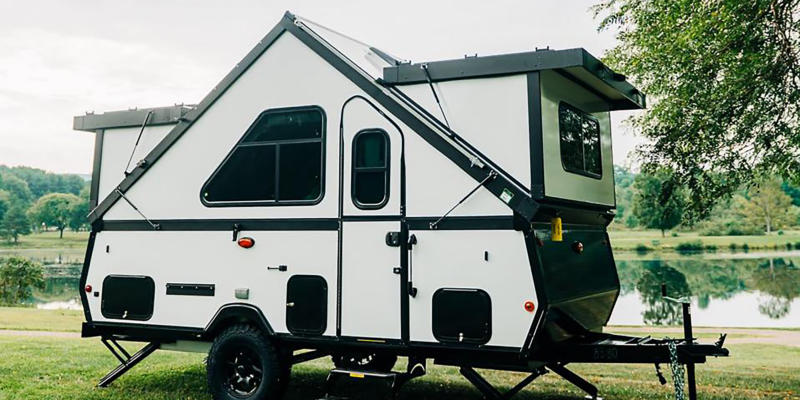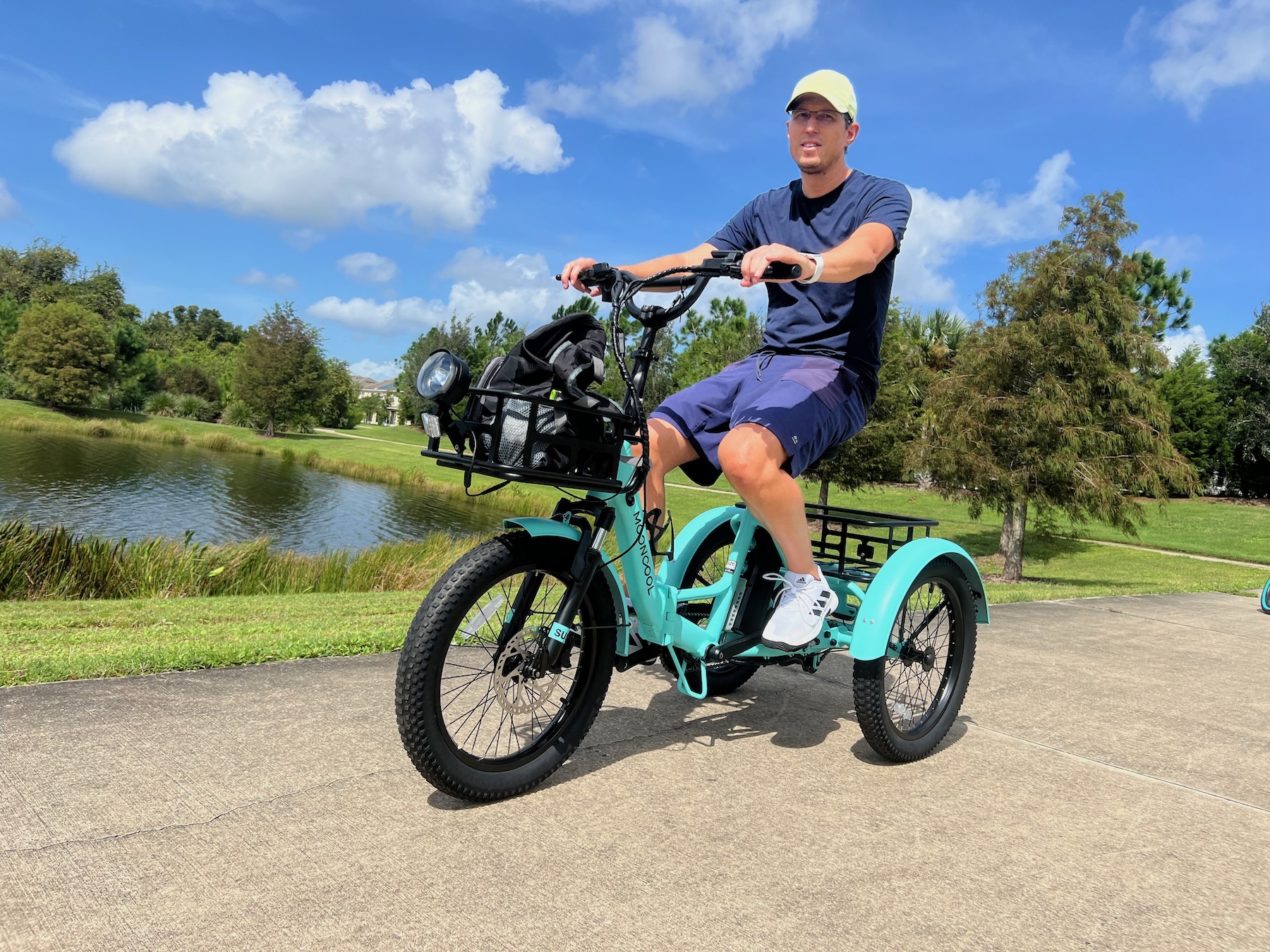Sign up for daily news updates from CleanTechnica on email. Or follow us on Google News!
One of my big career goals as an EV writer is to get into more adventure content. This hasn’t always been easy, as a sick pet has led to being basically grounded for the last 6 months or so. But that doesn’t mean that I’m not trying to be like Rubber Duck on Convoy, and paddle hard underneath the surface. One project I’ve been trying to get off the ground is an EV RV trip to most of the national parks in the United States. I hope to be able to share some great news about this soon!
Working on this project, I’ve realized that the tipping point of EV+RV usefulness isn’t going to arrive for everyone at the same time. For some destinations, the technology has been ready and the infrastructure has been in place for years. In other places, it’s simply not quite there yet. The same is true for people with different budgets, family sizes, expectations, and available spare time. So, we’re actually in the process of climbing a curve toward readiness, and the leading edge of that curve might be right or left of a given reader.
So, instead of being like George W. Bush and declaring Mission Accomplished, it’s time to dive into the details and see what an EV RV trip actually looks like in 2024 so every reader can decide for themselves where they stand this year.
EV Infrastructure Is Better Than Ever
For me, the tipping point for most locations happened in 2023. Many places that were either off limits or extremely difficult to get to before have opened up as infrastructure expanded. Dieselgate money, the first Infrastructure Bill stations, and things like GM’s partnership with EVgo and Pilot Truck Stops expanded CCS charging significantly. The number of places that can’t be reached shrinks almost every day.
On top of 2023 CCS charging growth, there was the mass migration to Tesla’s NACS plug. Non-Tesla cars won’t natively have that plug and work at Supercharger stations until 2025, but existing CCS cars (like mine) are about to get access to that network via adapters.
Between those two things, there are now very few places that can’t be reached, even with an EV that gets its range cut in half by towing. In some places, the additional Tesla locations was the determining factor. In others (southeast New Mexico is a great example), it was other expanding networks that saved the day, even for Tesla owners. Now that it’s about to all be one somewhat coherent network, everyone gets the full benefit.
That doesn’t mean that there aren’t going to be challenges for anybody wishing to tow an RV, though. The time spent at chargers goes up, and the number of charging stops also goes up. In some cases, the only electricity available in an area will be at an RV park, which means needing to spend the night and charge up (assuming the park allows you to charge an EV, of course). But, things are still a lot better than they were just a year ago.
Setting Expectations That Fit One’s Budget Is Still Key
Even with the massively improved infrastructure we’ve seen, we’re still at the point where compromises are necessary for most people.
The biggest one is finding a setup that fits your budget. I’d love to get a Silverado EV, because it has over 450 miles of range, which means still getting around 200 miles of range while towing a trailer. It would be cool to tow a small fifth wheel behind it and have plenty of room for the whole family, some of the pets, and all of our stuff. But, we’re talking about a $100,000 truck and a fairly expensive camping trailer if it’s going to be light enough to tow with a half-ton pickup and give me all of those sweet slides.
For some people, that might be within your budget, but it’s not within mine.
So, I have to find a way to make do with my $30,000 Bolt EUV. I’ve fitted it with a really nice hitch from Torklift and I added some bags to the rear suspension to make it not squat so bad pulling a trailer. But, I’m still limited to about 2,500 pounds max with that setup, and I have to be careful to choose a low-profile trailer to prevent the range (247 miles EPA) from becoming under 100 miles towing in the real world.

For me, that balance comes in the form of a lightweight popup camper, and I’ll probably go with an Aliner Evolution (similar to what’s pictured above). When I take the whole family, that’s going to mean setting up a tent next to it in most cases.
But, as I said, everyone’s situation is different. For some people, tent camping is going to be the only way forward because their EV can’t handle towing at all or they don’t want to deal with that. For others, an expensive pickup truck with enough battery to power a small town is the answer. It’s all about finding what works, or if nothing works, sticking with ICE this year.
 Chip in a few dollars a month to help support independent cleantech coverage that helps to accelerate the cleantech revolution!
Chip in a few dollars a month to help support independent cleantech coverage that helps to accelerate the cleantech revolution!
Planning Is Essential
Once you have a plan set up, you can’t just hit the road and start looking for gas when the needle gets close to E like you can in an ICE vehicle. In a few years, when stations are all over the place, you’ll be able to do that. But, right now, failure to plan is only a plan to fail.
Towing extra camping gear, whether in a trailer or on top of your vehicle, makes all normal range predictions go out the window. The extra weight and aerodynamic drag means that your real world range always goes down. So, your normal trip planning software (built-in or otherwise) is probably going to get your stranded. Really good software, like that included in the F-150 Lightning and Rivian trucks, can account for your extra power consumption, but you’ll have to RTFM or watch some YouTube videos to do it right.
Really, for something as complex as towing, I’d recommend using A Better Routeplanner (ABRP). It’s the same software that Rivian’s trucks use now, but if you access it on your phone or computer, you get a lot more control over it. I can’t explain how to do it all here, but being able to connect to your vehicle and get real power consumption data means extreme accuracy. Then, being able to add charging stops, RV park stays, and much more means you don’t get stranded. I’ve planned some heinously complex trips using the software and it has kept me out of trouble every time.
Have a tip for CleanTechnica? Want to advertise? Want to suggest a guest for our CleanTech Talk podcast? Contact us here.
Latest CleanTechnica TV Video
CleanTechnica uses affiliate links. See our policy here.





